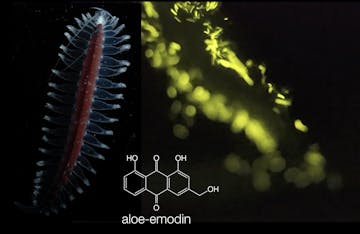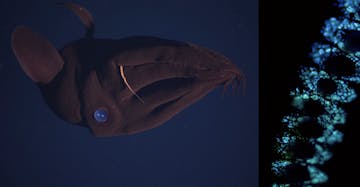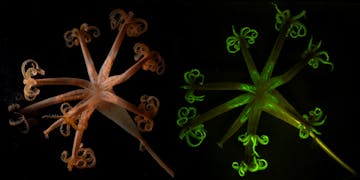
This figure shows the abundance of non-luminous and luminous organisms seen on midwater ROV dives. There are about three times as many bioluminescent species seen, and that ratio is nearly constant from the surface to 4,000 meters (13,123 feet) depth.

Although most animals in the sea make blue bioluminescent light, the worm Tomopteris is one of the few that makes yellow light. The chemical that gives it this yellow color was discovered by MBARI researchers. Photo by Steve Haddock.

The genes, proteins, and chemicals that animals use to make light have not all been discovered or characterized. The vampire squid uses the same light-emitting chemical as some jellyfish to make the bioluminescent spots on its arms (right), but the protein it uses to trigger light emission is still under investigation. Vampire squid are generally less than 30 centimeters (12 inches) long.

The sea pen, Umbellula, uses fluorescent proteins to shift the color of its bioluminescent light from blue to green. Here we can see the animal under normal white light and then under blue illumination which selectively excites its fluorescent proteins. Photo by Steve Haddock.

